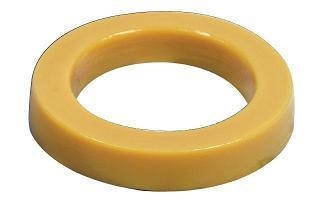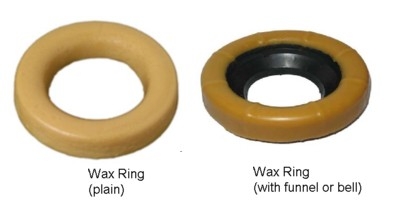Wax ring with horn vs without horn
Are you in the process of installing a new toilet or replacing an old wax ring? Have you ever wondered if there’s a difference between a wax ring with a horn and one without a horn?
When it comes to toilet installation, the wax ring is an essential component that seals the connection between the toilet and the waste pipe. The traditional wax ring has been around for decades, but now there are options available with and without a horn.
Choosing the right wax ring for your toilet installation can make a big difference in preventing leaks and ensuring a secure connection. In this article, we will explore the differences between a wax ring with a horn and one without a horn, and help you make an informed decision on which one is the best fit for your toilet installation needs.
What is a Wax Ring with Horn?
A wax ring with horn is an essential component in any toilet installation process. It is a soft and malleable ring made of high-grade petroleum wax, which is designed to create a watertight seal between the toilet bowl and the waste pipe or flange in the floor. The wax ring is placed between the toilet base and the flange or waste pipe, forming a positive seal that prevents any sewer gases from seeping into your home and eliminates any water leaks.

The horn of the wax ring refers to the small flange that protrudes from the ring itself and fits into the toilet’s drainage horn. The horn provides additional support to the wax ring to ensure proper alignment of the toilet bowl with the waste pipe. This helps to maintain the integrity of the seal, and prevents the wax ring from moving out of position, especially in cases where the wax has been subjected to movement due to uneven floors or recessed flanges.
When choosing a wax ring with a horn, it is important to ensure that it is the correct size to fit with your toilet’s outlet horn. Usually, the standard size for toilet bowls is 3 or 4 inches in diameter, while the drainage holes of the wax ring are also 3 or 4 inches to fit with standard drain lines. Other essential factors to consider when installing a wax ring with a horn include your toilet’s backset, the type of floor, and the height of the finished floor.
What is a Wax Ring without Horn?
A wax ring without a horn is a type of wax seal used in toilet installations that does not have a protruding flange, unlike its horned counterpart. This type of wax ring relies solely on the wax material to create a tight and watertight seal between the toilet bowl and the waste pipe.
One of the benefits of using a wax ring without a horn is that it can be more versatile in accommodating different toilet models and configurations. Since it does not have a fixed size or shape, it can conform to irregular or non-standard toilet drainage outlets, such as those found in backset toilets or toilets with custom drain pipes.
However, installing a wax ring without a horn requires additional care and attention to ensure a proper seal and alignment. Since it does not have a horn to support and guide the toilet bowl, the installer must ensure that the toilet is adequately aligned with the waste pipe before tightening the bolts. Failure to do so can result in leakage, damage to the floor or the toilet, or sewer gases entering the bathroom.
Benefits of Using a Wax Ring with Horn
If you’re considering a toilet installation or replacement, you may have heard of a wax ring with a horn. This type of wax ring differs from its hornless counterpart in that it features a small, flanged extension that fits snugly into the toilet’s drainage outlet. While both types of wax rings offer a watertight seal, using a wax ring with a horn can provide several advantages that make it a popular choice among homeowners and professional plumbers.
One of the most significant benefits of using a wax ring with a horn is that it provides a positive seal between the toilet and the waste pipe. The flanged horn acts as a guide for the toilet bowl, ensuring that it aligns correctly with the drain outlet and remains stable during use. This alignment is crucial for preventing leaks and damage to the floor or toilet, as well as preventing the escape of sewer gases into the bathroom.
Another advantage of using a wax ring with a horn is that it can be more forgiving when it comes to uneven surfaces or recessed flanges. Since the horn extends slightly into the toilet’s drainage outlet, it can help compensate for minor variations in the flange height or placement. This feature can be particularly useful when installing a toilet on a concrete slab or tile floors.
Using a wax ring with a horn can also make toilet installation and alignment easier, even for those who have little plumbing experience. The horn acts as a guide for the toilet bowl, helping to ensure that it is centered over the waste pipe and properly aligned before tightening the bolts. This ease of installation can save time and reduce the risks of errors that can compromise the seal and functionality of the toilet.
Benefits of Using a Wax Ring Without Horn
When it comes to toilet installation, a wax ring without a horn is a popular choice for many professionals and DIY enthusiasts alike. While it may not have the added flange or guide of a wax ring with a horn, it still provides substantial benefits that make it a reliable choice for creating a watertight seal between the toilet and the waste pipe.
One of the primary advantages of using a wax ring without a horn is its versatility. It can be used in a variety of settings, from backset toilets to floor type toilet bowls, and in scenarios where flanged horns may not fit correctly. This flexibility makes it an ideal choice for those who need to install a toilet quickly and efficiently without worrying about fit or item compatibility.
Another benefit of a wax ring without a horn is its durability. Made from high-grade petroleum wax, it can withstand a range of temperatures and resist decay from sewer gases and other corrosive chemicals. This resilience ensures the seal remains watertight even under harsh conditions and reduces the likelihood of leaks or damage over time.
Additionally, a wax ring without a horn can be an ideal choice for those who prefer a cleaner and easier installation process. Unlike a wax ring with a horn, it doesn’t require additional adjustment or careful alignment to ensure proper bowl placement. With just a few simple steps, it can be placed on the toilet bowl, aligned with the waste pipe, and compressed into place to create a tight and durable seal.
Considerations for Choosing Between Wax Rings with or Without Horns
When it comes to installing a toilet, choosing the right wax ring is essential for a proper and reliable seal. But with so many options available, it can be challenging to determine which type of wax ring is best suited for your specific needs. One of the primary considerations when choosing between a wax ring with or without a horn is the design of your toilet and existing plumbing setup.

For example, if your toilet has a recessed flange or uneven floors, a wax ring without a horn may be the better choice as it can conform to the shape of the flange and provide a more even seal. Similarly, if you’re working with a toilet that has a floor-mounted waste pipe, a wax ring without a horn can provide a more straightforward and efficient installation process.
On the other hand, if your toilet has a flanged horn or is situated on tile floors, a wax ring with a horn may be a better fit. The flanged horn can provide a positive seal against even surfaces and help ensure proper bowl alignment and placement. It’s important to note that wax rings with horns can also come in different materials, such as plastic polyethylene, that can provide additional benefits like being able to withstand extreme temperatures.
Another important consideration when choosing a wax ring is your experience with toilet installation. If you’re a DIY homeowner who hasn’t installed a toilet before, a wax ring without a horn may be more beginner-friendly as it requires less adjustment and alignment during the installation process. However, if you’re working with more complex plumbing setups or don’t feel confident in your ability to install the toilet yourself, hiring a professional plumber to install a wax ring with a horn may be a safer and more reliable choice.
Meet Lila Robinson, an expert in the world of plumbing with a talent for delivering valuable insights and captivating articles on an array of plumbing topics. With years of experience handling complicated plumbing issues, Lila has become a go-to resource for homeowners and businesses alike.
Packing vast knowledge in plumbing tools and science, Lila creates a sense of community on her blog and social media accounts, engaging with readers from all walks of life. Her writing style is authentic, unique, and engaging, and she has an exceptional ability to break complex concepts into understandable ideas.
If you have encountered a plumbing issue, chances are Lila Robinson has conquered it. Her articles uncover the underlying problems behind some of the most unexpected plumbing problems, from tankless water heater error codes to drain snakes in vents.
Whether you’re a beginner or an experienced plumber, Lila Robinson’s blog has something for you. Follow her social media accounts to keep up-to-date with the latest posts and join the conversation.